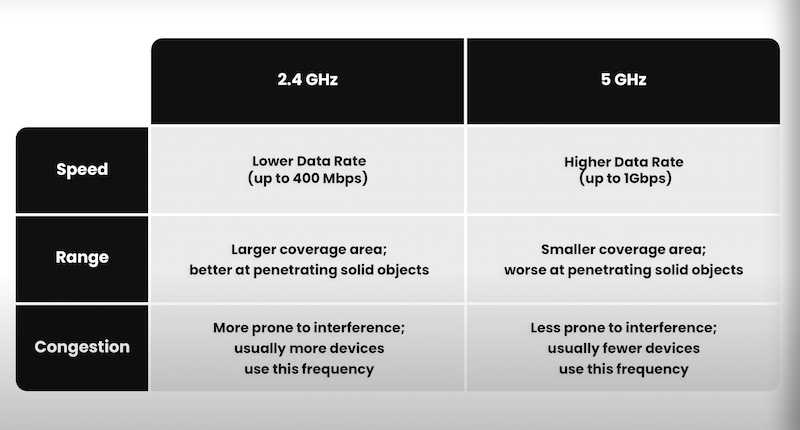
The downside is that you will need to spend more money in this case. However, this can be solved using range extenders or mesh WiFi systems. In addition, 5GHz’s effective range is shorter than what you get with the 2.4 GHz band. While the 5 GHz band is not as congested, which means that it provides a faster and more stable connection, the shorter waves that it uses, mean that it is not as effective when it comes to get through walls and solid objects. The thing is that since so many devices use the 2.4 GHz band, the congestion may cause the connection to drop and lead to slower speeds. It can be said that it is the best option if you require better range on your devices, or if you have many walls or other solid objects that could interfere with your WiFi signal. Since this band uses longer waves, it works better for longer ranges and transmission through walls. The 2.4 GHz band can get too much traffic since it is used by many kinds of devices, including baby monitors, garage door openers and of course, wireless phones. In addition, you need to consider the ideal conditions. The maximum speed that can be reached, depends on the wireless standard supported by a router. However, there are two things that you need to keep in mind. In theory, 2.4 GHz WiFi supports up to 450 Mbps or 600 Mbps, but this depends on the type of router.

The main difference between 2.4 Ghz and 5 GHz is the speed. Let’s start by saying that these two bands are numbers that your WiFi can use for its signal. What are the differences between 2.4 and 5 GHz? In this article, we will take a closer look at these numbers and will help you to understand the difference between them.

This refers to the two WiFi bands used by a router: 2.4 GHz and 5 GHz.

While looking for a new router, chances are that you come across the term dual band.


 0 kommentar(er)
0 kommentar(er)
